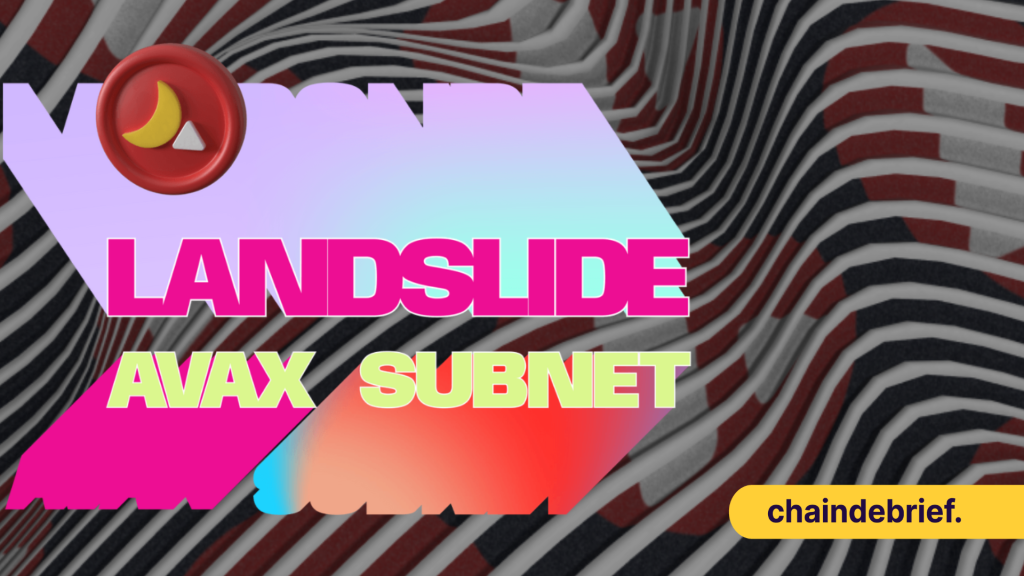What is Landslide Network?
Landslide Network seeks to swap the Tendermint Consensus with Avalanche Consensus and connect it securely with Cosmos Software Development Kit (SDK) and Inter-Blockchain Communication (IBC) Protocol to build a Cosmos IBC-enabled subnet on Avalanche; this allows for the native integration of Cosmos IBC and the Avalanche ecosystem.
The Avalanche consensus algorithm (also known as the “rocket engine”) is superior to Tendermint as it emphasizes achieving consensus among a network of nodes without requiring them to agree within the same time frame.
This results in faster and cheaper transactions, greater scalability, enhanced security and greater network decentralization (addressing the challenges of the Blockchain Trilemma). The goals of Nathan and his team are as follows:
The ultimate goal is to enable interoperability where assets can be moved between Cosmos zones, Avalanche and even Terra in a secure, efficient, trustless and cost-effective manner. Anything that exists on Cosmos SDK, Terra, Thorchain and some parts of the Binance Smart Chain (BSC) can run with faster finality through Avalanche Consensus.
Developers can bridge or fork to port a dApp from one blockchain to another. Bridging establishes a connection between two blockchains and facilitates the transfer of information and assets from one blockchain to the other.
This is achieved by making a copy of the code base, deploying a smart contract on the Landslide Network, and running the copied code and Landslide through the same Virtual Machine (VM). Forking involves the creation of a new cryptocurrency from an existing blockchain by copying and modifying the current code such that a new version of the current cryptocurrency is created and operates independently of the original blockchain.
Why use Landslide?
1/ A #Cosmos Landside is coming to @avalancheavax 🔺@CosmosAVAX will enable the first Cosmos/IBC-enabled subnet for $AVAX.
— Emperor Osmo🧪 (@Flowslikeosmo) February 12, 2023
What does this mean?🧵 pic.twitter.com/S0isYSEjEm
Landslide Network uses an open-source CosmWasm SDK to port over most Cosmos and Terra ecosystems to run Tendermint-based dApps natively within the Avalanche ecosystem. New games, Automated Market Makers (AMMs) and other dApps that require higher throughput and greater scalability can be made available with sub-second finality.
Besides developing with faster finality, Terra developers can bridge liquidity from IBC and choose to replicate the original state from before the Terra crash. This breathes life into many of these Terra dApps as they can get ported to the Landslide Network and continue functioning.
In addition, potential free airdrops also await Terra, Cosmos and Avalanche, users. Landslide Network intends to distribute 20% of its tokens to these users. Terra users who were wrecked due to the Terra collapse will have a shot at claiming the airdrop.
The Gigabrains behind Landslide Network
The founder of Landslide Network, Nathan Windsor, has an impressive track record. Besides graduating from Cornell University, he is a serial entrepreneur, accomplished blockchain consultant and outstanding programmer.
Nathan became convinced that subnets were the key to blockchain scalability after becoming acquainted with his fellow Cornell alumni, Emin Gun (Founder and CEO of Ava Labs) and his team and studying their research on subnet scalability back in 2019.
Beyond Ethereum Virtual Machine (EVM), Nathan and his team assessed that the Cosmos ecosystem was Avalanche’s strongest opponent. Hence, their vision was to bring the Avalanche Consensus to Cosmos, focusing on subnet scalability instead of throughput and latency. This solidified the foundation from which they decided to build the Landslide Network.
Conclusion
Landslide Network creates a win-win situation for both the Avalanche and Cosmos ecosystem by availing all the technology that Cosmos offers to Avalanche while benefiting Cosmos with Avalanche’s “rocket engine” at the same time.

If successful, Landslide Network holds the key to a cross-chain IBC world. There is still much to do, and Nathan and his team need to deliver on the lite client that communicates the state of the Avalanche mainnet and Landslide’s subnet to IBC relayers. However, I remain optimistic that each Cosmos zone will be on an Avalanche subnet.
[Editor’s Note: This article does not represent financial advice. Please do your research before investing.]
This article is done by our freelance writer, Clarence Lee
Featured Image Credit: ChainDebrief



































